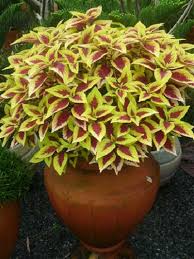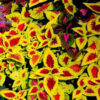The Process of Preparing Royal Cuisine: A Glimpse into the Culinary Excellence of Royal Kitchens
The preparation of royal cuisine is a fascinating journey, filled with intricate techniques, rare ingredients, and an unwavering commitment to culinary perfection. Throughout history, royal kitchens have been the domain of highly skilled chefs who prepared dishes not only to satisfy the hunger of kings, queens, and their courts but also to display the power, wealth, and refinement of the monarchy. From the finest ingredients sourced from across the empire to the most elaborate cooking methods, royal meals have always been an emblem of status and luxury.
In this article, we will explore the processes involved in preparing royal dishes, the influence of tradition on royal cuisine, and the meticulous effort that goes into making each meal fit for a king or queen. From the kitchens of Imperial China to the lavish courts of France and England, the preparation of royal food has been a complex art, blending gastronomy with culture and politics.
1. The Role of the Royal Chef and Kitchen Staff
At the heart of every royal kitchen is the head chef, known by various titles in different cultures. The head chef was not just a cook but also a trusted advisor to the monarch. The process of preparing royal meals often began with the chef receiving instructions on what should be served based on the occasion—be it a feast, a diplomatic dinner, or a ceremonial event.
The royal kitchen was a highly organized space, with a team of chefs, sous-chefs, pastry chefs, butlers, and kitchen aides working in harmony. The staff often included specialists in particular types of cuisine, such as pastry chefs who crafted elaborate desserts, or fishmongers who were skilled in preparing rare fish for the emperor’s table. The royal kitchens, therefore, were a reflection of the emperor’s desire for perfection and their devotion to ensuring that every detail of the meal was flawless.
Selecting Ingredients: The Importance of Freshness and Rarity
One of the most important aspects of preparing royal dishes was the selection of ingredients. Freshness and rarity were paramount. For example, in the imperial kitchens of China, chefs would source rare mushrooms from the mountains, delicate herbs from the imperial gardens, and even exotic fruits imported from far-off lands. Similarly, in European royal kitchens, the finest meats, such as venison, game birds, and fish, were selected for their superior quality.
Royal chefs often had access to ingredients that were not available to the general public. Some dishes required exotic items such as shark fins, bird’s nest, or luxury meats like peacock and flamingo. These ingredients were not just about taste—they were a symbol of the power and wealth of the monarchy.
The Process of Sourcing Rare Ingredients
The process of obtaining rare ingredients was a complex task, involving royal couriers, merchants, and traders who were responsible for sourcing the finest produce from across the kingdom and beyond. Special emissaries were often sent to foreign lands to bring back prized ingredients, such as spices from India, fruit from Southeast Asia, or exotic animals for feasts.
The chefs would then carefully inspect and prepare these ingredients before the cooking process began. For instance, shark fins would be meticulously cleaned and dried, while bird’s nest would require delicate handling due to its fragility. Such preparations required patience and expertise, as royal dishes had to be executed with the highest level of precision.
2. The Preparation of Royal Dishes: Techniques and Skills
Royal cuisine was characterized by its elaborate preparation techniques. Cooking was not just about following recipes; it was an art form that required creativity, knowledge, and immense skill. Each dish was carefully crafted to reflect the occasion and the tastes of the royalty. The preparation of royal dishes involved the use of complex cooking methods, including slow roasting, braising, steaming, poaching, and flambéing, among others.
Roasting and Braising: A Slow-Cooked Elegance
One of the most iconic methods of preparing royal dishes was roasting, especially when it came to meats such as venison, boar, or lamb. The royal kitchens would often roast these meats over an open flame or in a specialized oven, ensuring that they were cooked to perfection, with a tender interior and a crisp exterior.
Braising was another popular technique used in royal cuisine. This method involved cooking meats slowly in a liquid, such as wine or broth, allowing the flavors to meld and the meat to become incredibly tender. The slow cooking process was essential for creating rich, flavorful dishes that were often served during royal feasts. Venison à la royale, for instance, was prepared by braising venison in a mixture of red wine, herbs, and spices.
Steaming and Poaching: Preserving Freshness and Flavor
Steaming and poaching were also common methods used in the preparation of royal dishes. Steaming helped to preserve the freshness and nutritional value of ingredients, especially delicate items like fish or vegetables. For example, the Imperial Hot Pot in China involved a steaming process that allowed the flavors of various meats and vegetables to meld together while maintaining their original freshness.
Poaching, which involves gently cooking ingredients in water or broth at low temperatures, was another technique often used for royal dishes. Bird’s Nest Soup, for instance, involved poaching the bird’s nest in a rich broth, ensuring that the delicate nests did not lose their texture or flavor.
Pastry and Dessert Making: A Royal Tradition
No royal feast would be complete without the luxurious desserts and pastries that were prepared with great skill. The royal pastry chef played an integral role in ensuring that the desserts were as extravagant as the main courses. Pastries were often intricately decorated, incorporating exotic ingredients such as gold leaf, saffron, and rare fruits.
One of the most iconic royal desserts was fruit tarts, made with berries and cream or custard and often decorated with intricate sugar work. In France, croquembouches, a towering dessert made of cream-filled profiteroles stacked into a cone shape, were frequently served at royal weddings and state events.
In England, spiced cakes and fruit puddings were popular, with the use of rich ingredients such as sugar, spices, and alcohol giving these desserts a distinctive flavor. Trifles, a layered dessert made from sponge cake, fruit, cream, and custard, were also favored by the British royal family.
3. The Presentation of Royal Dishes: An Art of Display
The presentation of royal cuisine was just as important as the preparation itself. In royal kitchens, chefs and servants were trained in the art of food presentation, ensuring that every dish was a visual spectacle. The use of fine china, gold-plated silverware, and decorative garnishes elevated the dining experience, making the meal a feast for the eyes as well as the palate.
Table Arrangements and Garnishes
For royal feasts, the arrangement of the table was a carefully choreographed affair. Dishes were arranged in a way that highlighted the diversity of the ingredients and the skill involved in their preparation. Garnishes, such as edible flowers, herbs, and intricate sugar sculptures, were used to enhance the aesthetic appeal of the dishes.
In some cases, dishes were presented in elaborate serving vessels, such as ornate bowls or trays, and were accompanied by elaborate sauces served in silver or gold containers. The visual presentation was a reflection of the grandeur of the royal court, with each dish playing a part in the overall experience.
4. Royal Meals and Cultural Significance
The meals prepared for royalty were more than just a matter of taste—they carried cultural and symbolic significance. The foods served were often chosen to reflect the monarchy’s values, beliefs, and aspirations.
For example, lotus seeds and ginseng were frequently included in royal Chinese cuisine as they symbolized longevity and vitality. In Europe, roast meats and rich pastries were considered symbols of abundance and prosperity, reinforcing the idea of the monarchy’s ability to provide for the people.
Conclusion
The preparation of royal cuisine has always been an art form that combines the finest ingredients, the most intricate cooking techniques, and an unwavering dedication to excellence. From the skilled chefs who sourced the rarest ingredients to the elaborate presentations that captivated the royal court, the process of creating royal meals was a testament to the power and prestige of the monarchy. While modern kitchens may no longer replicate the exact techniques of ancient royal kitchens, the influence of these culinary traditions can still be seen in the world’s finest restaurants and the luxurious dining experiences they offer. In the end, royal cuisine represents much more than just food—it is a reflection of the grandeur and culture of the royal family, a symbol of their power and prestige, and a way to celebrate their place in history.


